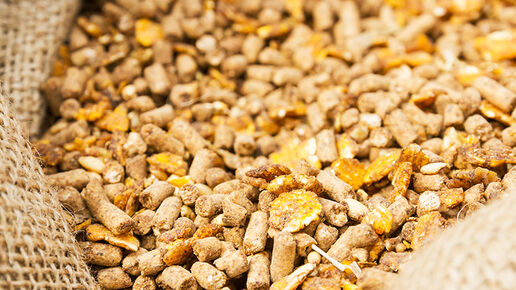EFSA launches public consultation on developing a harmonised approach for the environmental risk assessment of additives used in animal feed

Today, EFSA’s Scientific Panel on additives and products or substances used in animal feed (FEEDAP) launched a public consultation aimed at establishing a harmonised scientific approach in Europe to assess the environmental risks posed by additives, products and substances used in animal feed, including fish feed. As different environmental compartments may be exposed to these substances (including soil, groundwater, surface water and sediment), this is a significant issue not only for environmental protection but also for food safety. Once adopted by EFSA’s FEEDAP Panel, the principles set out in this guidance document will be used as a basis when assessing the environmental risk associated with the use of feed additives.
The European Directive on the assessment of additives in animal nutrition Vetenskapen om sambandet mellan kosten och kroppens behov av näring[1] stresses the importance of assessing the environmental impact of feed additives, since they are typically used over an extended period of time, often for large numbers of animals and, in some cases, they are excreted by animals into the environment to a considerable extent. Exposure to the environment may also occur through leaching to groundwater and through drain or run-off from grass and arable land to surface water.
To date, environmental risk assessments carried out for feed additives used in the terrestrial environment have been based on applying simple and non-specific exposure models, while no specific environmental risk assessment guidance exists for the aquatic environment.
EFSA has set up a self-tasking working group to study this issue and to develop a harmonised approach to assessing the environmental impact of feed additives. The working group brought together 13 European scientists from a range of relevant specialisations. Having reviewed the existing scientific knowledge and available data, the Panel has now drafted a working document which gives an overview of the current situation with regard to farming and aquaculture practices in Europe. It also presents methods to calculate the predicted concentrations of feed additives in the terrestrial and aquatic environments. The draft paper has now been put to public consultation to ensure broad scientific consensus on the proposed approach.
Once adopted by EFSA’s FEEDAP Panel, the principles set out in this guidance document will be used as a basis when assessing the environmental risk associated with the use of feed additives.
The chair of the FEEDAP Panel, Prof. Andrew Chesson, said: “FEEDAP is a very active Scientific Panel which has issued over 80 Scientific Opinions during the last three years. Much of our work involves assessing applications for the placing on the market of animal feed products. The launching of this public consultation represents an important step which is strongly in the interests of environmental protection and the health and safety of consumers.”
EFSA has asked to receive all contributions by 31st October 2006.
[1] Commission Directive 2001/79/EC of 17 September 2001 amending Council Directive 87/153/EEC fixing guidelines for the assessment of additives in animal nutrition
How to contact us
EFSA Media Relations Office
Tel. +39 0521 036 149
E-mail: press [at] efsa.europa.eu (Press[at]efsa[dot]europa[dot]eu)
(Only if you are a member of the press)
Ask a Question Service
You have a question about EFSA’s work? Contact our Ask a Question service!